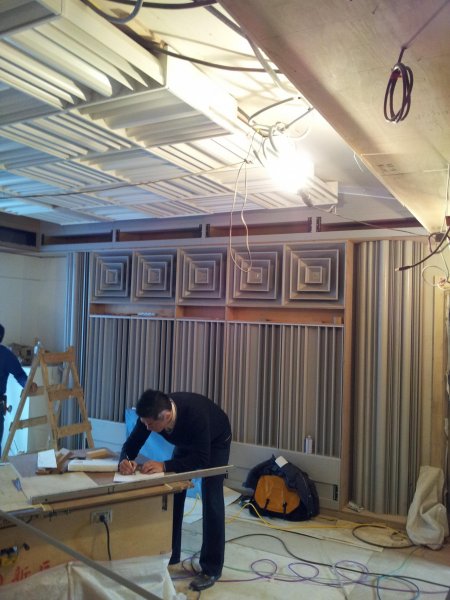I agree- it is impossible to know from a few pics if Harley room is good or not. But there are still some basic rules you can follow to "go in the right directions": Symmetry, right balance of reflective surfaces and absorption, treatment of corners for room nodes, no 18 feet high ceiling which will generate cathedral effect.... You can never know if a room will sound good, but there are rooms which are so badly designed you know they cannot sound good...
I agree with Jeff that symmetry is very important. But even in an unsymmetrical room, like Harley's room with a big opening on one side, you may end up very well losing on imaging precision (because of lack of symmetry), but gain on bass reproduction, if the connection with the other room plays a bass trap role at the right frequency.... Impossible to know before measuring it.
Specifically on the Q7, I have heard it in great rooms and in poor rooms. It always sounded from very good to amazing, but of course the better the room (and the upstream components), the better the sound! But a room will not transform a donkey in a racing horse... it just pushes back the limit of what is possible with a specific system.
I doubt that Alon Wolf will answer Lee email on "how the Q7 sounded in Harley's room", because 1) like all audio companies, he must be busy organizing for CES, 2) what he has heard depends a lot on specific equipment Robert was using. If the set up was done in one day, I don't think that there was enough time to really play with different amps, cables, sources and get the best out of the Q7. As I said already before, Q7 are so transparent to the source that they get much more impacted by change of upstream components than any other speakers I heard so far.
Being in the process of building an extensively treated room, I know that there is no guarantee of result. I have been in one Rives room and one other dedicated "dead end-live end" room custom designed by a famous acoustician, which both sounded and measured terrible. And I have been in a Rives room which was very nice. Luck is part of the equation. I have SMT's acoustician arriving at my home on Monday to take measurements, tune my 24 Helmholtz resonators and the big bass traps I have in ceiling and in the back wall... Let's see where we will end up... crossing fingers!
Here is where I stand today... 2 more weeks until I get a finished room!:
View attachment 7333


